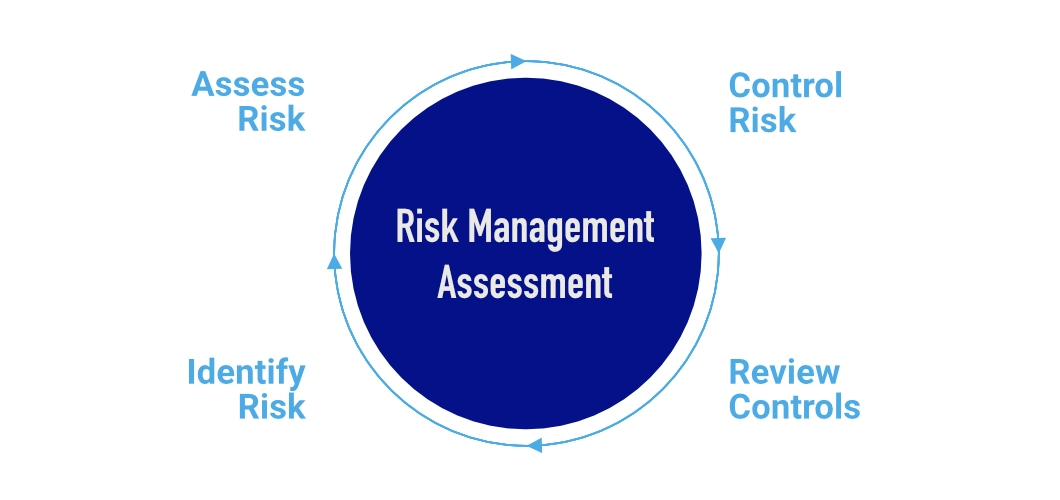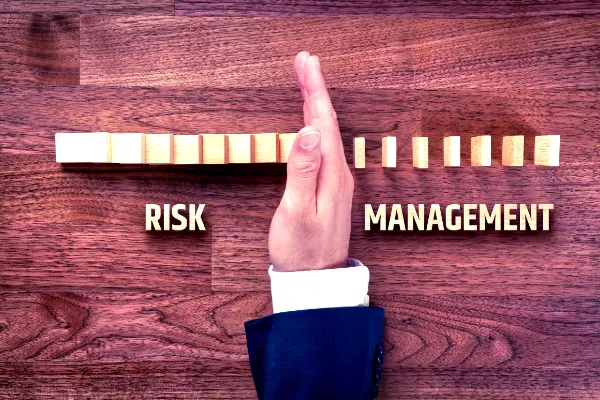
Risk Management in Construction: How to Secure Profitable, Predictable Projects
Risk management in construction isn’t just another industry buzzword. It’s the silent variable that defines whether your project closes with profit or haemorrhages margin. Things like delays, going over budget or poor communication often seem like small technical issues but they’re actually big business problems. Left unchecked, they don’t just derail delivery, they can erode trust, strain cash flow, and ultimately weaken your firm’s position in the market.
Here’s the truth most firms don’t want to admit: you can’t completely get rid of risk. It’s always going to be part of the job. Fast-moving schedules, unpredictable site conditions, and last-minute client changes are part of the reality in the construction industry. But what separates successful firms from the ones barely staying afloat isn’t the lack of risk, it’s how well they handle it.
At DDC Solutions(Digital construction solutions firm), we believe managing risk isn’t about burying your team in reports or adding more buzzwords. It’s about running your business in a smarter, more stable way. One that can roll with the punches without falling apart. We call it Digital Business Stability — a practical, strategic way to build risk control right into the way your company works.
Let’s break down what that actually means.
The Real Meaning Behind Risk Management
Most firms think about risk in surface-level terms. Unexpected weather, supplier issues, client indecision. And yes, those are real risks. However, focusing only on the visible symptoms misses the bigger picture.
The truth is, real risk management goes much deeper. It’s not just about putting out fires after they’ve started. It’s about designing your business in a way that stops those fires from starting in the first place. It’s about building resilience right into how your company runs, so when things get unpredictable, you’re ready—not scrambling.
Surface-Level vs. Structural Risk Thinking
Here’s a simple way to think about it:
• A surface-level mindset treats risk like a one-off problem that pops up, causes disruption, and needs to be dealt with quickly.
• A strategic mindset sees risk as something that’s always there—but something you can reduce, absorb, or control if your systems are set up the right way.
Making this shift in how you think about risk changes everything. Instead of hiring more people just to stay ahead of problems, smart firms invest in better systems that stop the issues from piling up in the first place.
What Proactive Risk Management Looks Like in Practice
Let’s picture a construction company that’s taken risk seriously-not just as a reaction, but as part of how they operate every day. In this kind of company:
• Everyone on the project team knows what their job is before the first shovel hits the ground.
• All project documents are stored in one place, easy to access, and always up to date, no more hunting through email threads or shared drives.
• Revisions happen automatically in the system, so there’s no confusion about which drawing is the latest version.
• Communication is smooth and clear. The right people get the right info at the right time, without long email chains or miscommunication.
This might sound ideal, but it’s not out of reach. It’s what happens when risk management isn’t something you bolt on after the fact—it’s baked into how your business runs.
Proactive vs. Reactive: The Hidden Cost of Waiting
Firms that only tackle risk when things go wrong are usually the ones that end up spending the most cleaning up the mess. Think about it:
• When a subcontractor walks off the job because the payment terms weren’t clear, it’s not just a contract issue, it’s a problem that could’ve been avoided with better planning from the start.
• When a client changes the project scope and it blows the budget by 20%, the issue isn’t really the client. The real problem is that the firm didn’t plan for those kinds of changes upfront or set the right boundaries.
• When site teams end up using outdated drawings and cause rework that costs the company a lot of money, it’s not a simple field mistake. It’s a failure in how documents were controlled and shared.
The fix? Build smarter systems that spot these issues before they turn into big, expensive problems. By eliminating confusion and anticipating friction points, you can avoid headaches later on.
Why Risk is a Business Problem, Not Just a Project Problem

When a project runs £50,000 over budget, many firms just write it off as a typical project problem. But let’s take a step back and really think about it.
That’s £50,000 in lost profit. It’s money that could’ve been used to hire better talent, improve your tools, or even secure your next big client. Instead, it tightens your cash flow, increases debt, and limits your flexibility going forward.
Now, when a project gets delayed by six weeks, it’s not just an annoying scheduling problem. It means you might miss the chance to take on new work. It could damage client relationships or even give your competitors an opening to step in. And if rework becomes a regular issue due to unclear drawings or miscommunication? It’s more than just inefficiency. It’s a quiet drain on your team’s morale, trust, and long-term productivity.
The reality is, every project problem is really a business problem in disguise. Recognizing that connection is the first step toward creating a more stable and profitable company.
The 5 Types of Construction Risk That Threaten Business Health
At DDC Solutions, we’ve worked with hundreds of architects, contractors, and developers across different sectors and locations. No matter where they’re based, we’ve noticed the same five types of risk consistently show up as threats not just to project delivery but also to the long-term health of the business:
Financial Risk
This is the most immediate risk you’ll face. Budget overruns, underpriced tenders, poor payment schedules, and unclear costs are all red flags. Many firms think better budgeting tools will solve this, but tools alone don’t address the root cause—unpredictability.
We help you structure projects so cash flow is predictable, with real-time reporting and minimized financial exposure. From start to finish, you’ll know exactly what’s coming in, what’s going out, and when.
Process Risk
Having a great team is important, but if your workflows are unclear or inconsistent, you’re just asking for trouble.
We’ve seen companies where different teams use different file structures, naming conventions, or track revisions manually. These aren’t small problems, they lead to friction, rework, and missed deadlines.
We map out your project lifecycle and design lean, clear workflows that align with your business goals. No duplication, no guesswork. Just smooth delivery and measurable results.
Communication Risk
Construction is all about teamwork. But that teamwork breaks down quickly if roles are unclear or communication is inconsistent. Ever had a contractor working off outdated drawings? Or a client making decisions without all the facts? These aren’t just annoying, they’re expensive.

We streamline your communication so the right people get the right information at the right time. Our systems eliminate confusion, reduce email clutter, and make sure everyone’s on the same page without relying on manual tracking.
Compliance Risk
Building codes, legal contracts, safety standards, and compliance aren’t optional. But many firms only focus on it when something goes wrong. Not meeting compliance standards isn’t just about avoiding fines; it can damage your credibility.
We make compliance a part of your daily processes. Our tools ensure you’re always meeting the standards without adding extra work. From documentation to quality checks, compliance becomes seamless.
Reputation Risk
You can deliver ten flawless projects, but one poorly managed job can tarnish your reputation for years. Reputation is built over time. One slip-up and you can lose clients, subcontractors, and even your team’s trust. And once it’s lost, it’s tough to rebuild.
We help you deliver projects that don’t just meet expectations but exceed them. With clear communication, strong controls, and smooth delivery, you’ll build a reputation as a dependable partner. This opens the door to bigger contracts, better referrals, and long-term growth.
Your Blueprint for Risk-Free, Profitable Projects
Here’s a simple, actionable framework to get started:
- Define What Risk Means for Your Business
Look beyond just the usual project setbacks like delays and cost overruns. Identify the deeper, often hidden risks, such as financial gaps, staff burnout, misaligned tools, and poor documentation practices.
- Conduct a Process Audit
Track how projects really unfold. Don’t just assume things are going smoothly—take a close look at what’s actually happening at each touchpoint in the process.
- Standardise Operations
Establish consistent templates, naming conventions, documentation rules, and approval workflows. A standardized approach reduces confusion and errors.
- Use Technology Purposefully
Choose platforms that make your work easier and increase visibility. Avoid adding unnecessary complexity or using tools that don’t align with your goals.
- Measure, Learn, Adjust
Create feedback loops with regular post-mortems, review sessions, and performance dashboards. Risk management should be an ongoing process, constantly improving based on lessons learned.
Final Thoughts
Risk is an inevitable part of construction. But just because risk exists doesn’t mean it has to derail your success. The firms that thrive are not the ones who avoid risk, but those that manage it better than everyone else.
At DDC, we don’t just deliver BIM; we deliver business resilience. We protect your margins, your team, your clients, and your reputation—project by project, system by system.
If you’re ready to turn risk into a competitive advantage, let’s talk.


2 Responses